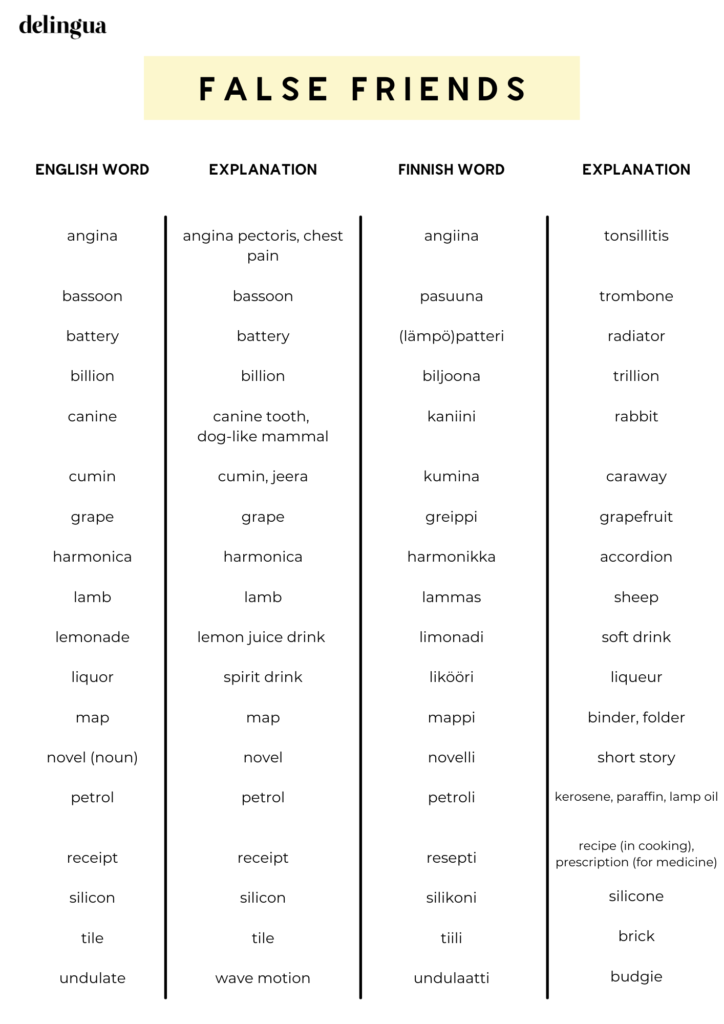One of the most confusing things about learning a new language is a linguistic phenomenon known as “false friends”. “False friends” refers to words in different languages that look the same but have different meanings. False friends can be cognates, that is, words that have a common origin but which have changed in meaning over time. They can also just happen to be similar words. There are also loanwords. These are words which appear in the original language in one sense but which, after being adopted in another language, have continued to develop so that the original meaning has either widened or changed. There are often a lot of false friends between similar sounding languages. For example, many Finns know that there are a lot of funny word pairs like this between Estonian and Finnish. For example, a Finn who does not know Estonian might easily think that the Estonian word “piim” means “piimä” (buttermilk) even though it actually means milk.
Such words can cause frustration or annoyance for language learners, as false friends look misleadingly alike and, in fact, only pretend to be friends. These false friends are particularly problematic in cases where a language learner assumes that a familiar looking word means the same thing as in their mother tongue. Many learners have probably found themselves using a word based on its apparent familiarity. From my own past, I remember a little too well the first few days in my Irish host family, where I ended up using a word that sounded right but, unfortunately, was not. I had trouble using the electric heater in my bedroom and asked the family for help. However, I didn’t know that the Finnish word “(lämpö)patteri” was not “battery” in English. Needless to say, my problem was not understood right away.
False friends are just one of the many interesting aspects about learning a new language, even though they can sometimes lead to misunderstandings. There is absolutely no shame in making a mistake, as it is the best way to learn, and most native speakers find it funny rather than annoying. There may not be as many deceptive word pairs between English and Finnish as in other languages, but some of them have meanings that are surprisingly deceptive. Here you’ll find some of the most common English and Finnish false friends and their meanings. How many of these false friends would catch you out?

